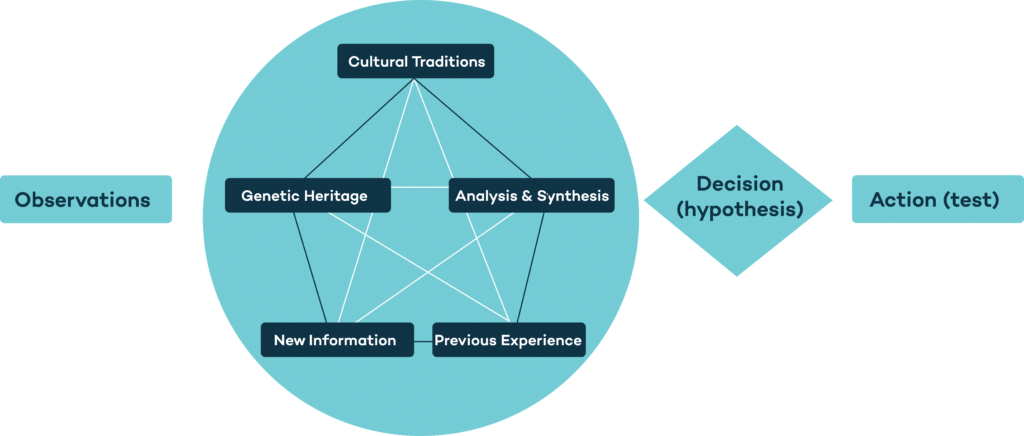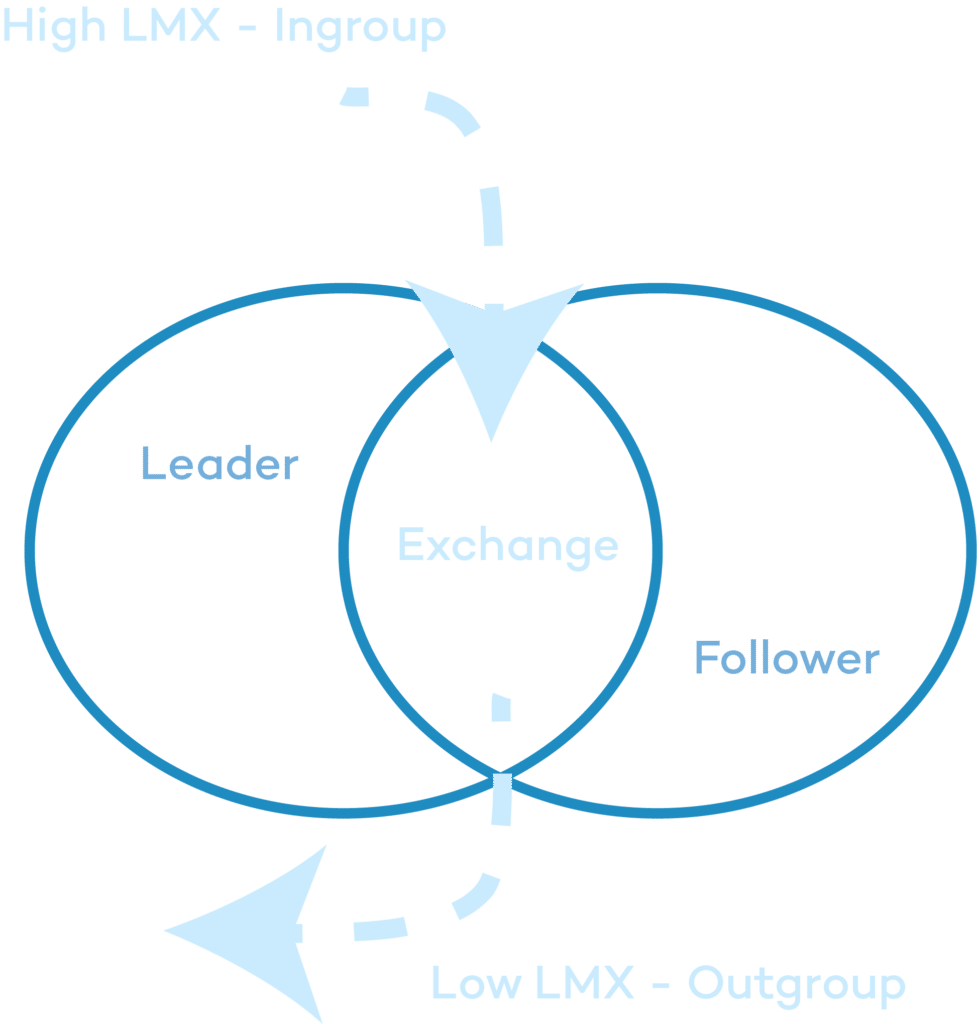
Introduction
Capitalism has been around for decades. The field of research which seeks to understand the concept of capitalism, has often been defined as the field of comparative political economy as a result of the focus on differences in institutional settings which determine economic outcomes (Regini, 2014). These differences are frequently seen not as products of business decisions but as legacies from various historical contexts. Today, notable differences remain in the industrial relations systems of several countries globally (McLaughlin and Wright, 2018).
Defining Capitalism
Definitions of capitalism have varied over the years since the 19th century. It has been used to characterise the emerging shape of the modern economy and the transformation of society as a whole. Capitalism is an economic system in which private individuals own property and operate according to their own interests, with supply and demand freely determining market prices in a way that can best serve society (Fund, 2017). In the twentieth century, the term “capitalism” became more frequently used to express political perspectives on the desirability and permanence of capitalism as opposed to socialism (Delanty, 2019).
Liberal Market Economies & Coordinated Market Economies
Liberal Market Economies (LME) and Coordinated Market Economies (CME) are two forms of capitalism that can be applied to both past and present theories of capitalism (Crouch, 2005). The concept of a liberal market economy, originally defined by Hall and Soskice, is characterised by the adoption of market mechanisms and agreements to manage relationships among suppliers and buyers. Additionally, they identify coordinated market economies, which are characterised by bargaining-based labour relations and arrangements that reflect employees’ longer-term commitments (Lansbury and Bamber, 2020). LME economies rely on labour markets that set wages through competition and typically have less regulation to protect employees and provide them with security (Crouch, 2005).
Social & National Factors in Relation to Market Economies
The developed world is often divided into liberal market economies (LMEs), such as the UK and USA, and coordinated market economies (CMEs), such as Japan and Scandinavian countries (Dibben and Williams, 2012). However, it is important to recognise that these approaches to capitalism have limitations and often do not account for differences in the social or political makeup of each country. Lansbury and Bamber (2020) highlighted that the institutional bases on which German and Japanese corporate governance arrangements are built, as well as the historical events that formed them, differ despite generating similar outcomes. This illustrates the importance of considering social and national influences on industrial relations based on the country in question. Despite pressures for convergence in industrial relations systems, Europe has maintained distinct national industrial relations systems (Black, 2005). Social and national factors are ultimately what must be taken into consideration when analysing national industrial relations systems (Lansbury and Bamber, 2020).
The Effect of External Forces on the Economy
Prices and wages typically take a while to adjust to the forces of supply and demand, with demand playing the largest role in determining economic growth (Hackemy 2017). The economy can transition between major phases of development and contraction through boom-and-bust cycles, which are a feature of economic growth (Hakemy, 2017). Today many multinational corporations are faced with the western style model of capitalism (Werhane, 2000). Businesses can pursue their ambitions competitively without the hassle of restrictions and undue regulations surrounding labour restrictions which can result in growth and economic good in every country (Werhane, 2000). It is important to remember that in this context, capitalist economies and industrial relations systems cannot be generalised for globally. The perception of what is good and beneficial to the employee and multinational corporations will vary from country to country based on the social and cultural norms (Werhane, 2000).
Conclusion
Capitalism can be useful in understanding the inner mechanisms of an economy. LME’s & CME’s illustrate than capitalism can be organised and function in many ways. Ultimately it is essential to consider the multitude of factors which can contribute to a successful economy including social, national and historical context.
Sources
Baran, P.A. (1963) ‘Review of Capitalism and Freedom’, Journal of Political Economy
Black, B. (2001) ‘National Culture and Industrial Relations and Pay Structures’, LABOUR, 15, pp. 257–277. Available at: https://doi.org/10.1111/1467-9914.00164.
Black, B. (2005) ‘Comparative industrial relations theory: the role of national culture’, The International Journal of Human Resource Management Available at: https://doi.org/10.1080/09585190500143980.
Calayton S. Rose and Rebecca Henderson (2018) Note on Comparative Capitalism – Technical Note – Faculty & Research – Harvard Business School, Harvard Business School. Available at: https://www.hbs.edu/faculty/Pages/item.aspx?num=48459 (Accessed: 7 May 2023).
Crouch, C. (2005) ‘Models of capitalism’, New Political Economy, 10(4), pp. 439–456. Available at: hTps://doi.org/10.1080/13563460500344336.
Crouch, C., Schröder, M. and Voelzkow, H. (2009) ‘Regional and sectoral varieties of capitalism’, Economy and Society, 38(4), pp. 654–678. Available at: https://doi.org/10.1080/03085140903190383.
Delanty, G. (2019) ‘The future of capitalism: Trends, scenarios and prospects for the future’, Journal of Classical Sociology, 19(1), pp. 10–26. Available at: https://doi.org/10.1177/1468795X18810569.
Denis, A. (2004) ‘Two rhetorical strategies of laissez-faire’, Journal of Economic Methodology, 11(3), pp. 341–357. Available at: https://doi.org/10.1080/1350178042000252983.
Dibben, P. and Williams, C.C. (2012) ‘Varieties of Capitalism and Employment Relations: Informally Dominated Market Economies’, Industrial Relations: A Journal of Economy and Society, 51(s1), pp. 563–582. Available at: hTps://doi.org/10.1111/j.1468- 232X.2012.00690.x.
Feldmann, M. (2019) ‘Global Varieties of Capitalism’, World Politics, 71(1), pp. 162–196. Available at: hTps://doi.org/10.1017/S0043887118000230.
Fund, I.M. (2017) Back to Basics: Economic Concepts Explained. International Monetary Fund.
Gollan, P. and Patmore, G. (2013) ‘Perspectives of legal regulation and employment relations at the workplace: Limits and challenges for employee voice’, Journal of Industrial Relations, 55, pp. 488–506. Available at: hTps://doi.org/10.1177/0022185613489392.
Hakemy, S. (2017) An Analysis of Milton Friedman’s Capitalism and Freedom. CRC Press. Hancké, B. (2009) Debating Varieties of Capitalism: A Reader. OUP Oxford.
Hughes, S. (2005) ‘The International Labour Organisation, New Political Economy, 10(3), pp. 413–425. Available at: hTps://doi.org/10.1080/13563460500204324.
Kano, L., Tsang, E.W.K. and Yeung, H.W. (2020) ‘Global value chains: A review of the multi- disciplinary literature’, Journal of International Business Studies, 51(4), pp. 577–622. Available at: https://doi.org/10.1057/s41267-020-00304-2.
Kollmeyer, C. (2021) ‘Post-industrial capitalism and trade union decline in affluent democracies’, International Journal of Comparative Sociology, 62(6), pp. 466–487. Available at: https://doi.org/10.1177/00207152221086876.
Lansbury, R.D. and Bamber, G.J. (eds) (2020) International and Comparative Employment Relations: National regulation, global changes. 6th edn. London: Routledge. Available at: https://doi.org/10.4324/9781003116158.
McLaughlin, C. and Wright, C.F. (2018) ‘The Role of Ideas in Understanding Industrial Relations Policy Change in Liberal Market Economies’, Industrial Relations: A Journal of Economy and Society, 57(4), pp. 568–610. Available at: https://doi.org/10.1111/irel.12218.
Regini, M. (2014) ‘Models of Capitalism and the Crisis’, Standing, G. (2008) ‘The ILO: An Agency for Globalisation?’, Development and Change, Available at: https://doi.org/10.1111/j.1467-7660.2008.00484.x.
Werhane, P.H. (2000) ‘Exploring Mental Models: Global Capitalism in the 21st Century’, Business Ethics Quarterly, 10(1), pp. 353–362. Available at: https://doi.org/10.2307/3857720.
Yang, I. (2015) ‘Positive effects of laissez-faire leadership: conceptual exploration’, Journal of Management Development, 34(10), pp. 1246–1261. Available at: https://doi.org/10.1108/JMD-02-2015-0016.

Introduction
The OODA loop or the ‘Boyd Cycle’ is a closed loop which was created by US Airforce Pilot John Boyd. The cycle is divided into 4 key pillars, observation, orientation, decision and action. The cycle was developed by the military strategist to assist and support decision making in rapidly changing environments. In most Action Learning Cycles (ALC), actions upon reflection synthesize learning. The ALC is reminiscent of the scientific method hypothesis testing where a hypothesis is developed, tested and serves to inform future studies or cycles. Although it was originally developed as a 4-step loop Boyd highlighted the importance of acknowledging that the loop was susceptible to be influenced by external factors outside of its control, illustrating the importance of orientation & decision in the overall loop.

The application of the OODA loop can play an integral role in gaining competitive advantage, particularly in the context of businesses operating within the same market. When facing competition, the OODA loop requires organisations to firstly observe their opponent considering all external and internal factors unfolding within the surrounding environment which might influence their decision. This informs the orienting phase of the loop in which the organisation must narrow down the number of strategic options which could be implemented to overcome their opponent. Finally, once the most suitable strategy has been selected it can then be implemented and actioned. The OODA loop is not just about getting ahead of the opponent, it is about getting inside the opponent’s loop and understanding what their weaknesses are.
How can Organisations Draw on the OODA Loop in Practice
Transform HR
- By redefining the role of the HR department organisations can focus on creating a progressive culture and enhancing their strategic agility.
- Consider recruiting employees from line management and designating them with HR duties to integrate practical insights into cultural development.
Develop an Operations Manual
- Write and continuously update their operations manual that serves as a guide for the standard and quality of work and mindset within the organisation. This manual should encourage creativity and initiative while providing a framework for consistent productivity, quality, and safety.
- Treat the manual as a living document that evolves with the organisation, incorporating contributions from employees to ensure it remains relevant and effective.
Foster a Creative Organisational Climate
- Implement regular brainstorming sessions and cross-functional teams to foster creativity and build an environment which nourishes collaboration & creativity.
Encourage Continuous Improvement
- Adopt the principles of continuous improvement to create a work environment where employees are motivated to actively reflect on their roles and participate in managing their own jobs.
- Implement formal processes for observation, analysis, and testing for changes in work processes
Apply Customer Feedback
- Regularly assess alignment with customer preferences through surveys and market research, using customer feedback to refine the organisational strategy
Conclusion
By implementing these strategies, organisations can enhance their ability to use the OODA loop effectively, ensuring strategic alignment, and resilience in the face of challenges. The OODA loop highlights the importance of strategy in any work environment where there is competition and an opportunity to gain a cutting edge ahead of competition. This article explored the structure and execution of the loop whilst highlighting how it might be employed by organisations to enhance operational efficiency and foster a culture of innovation and continuous improvement.
More on Feedback
Refining Performance Assessments: Reducing Recency Bias for Superior Evaluations
Lars Schmidt: Redefining HR and Empowering the Next Generation of People Leaders – Podcast
Sources
https://thedecisionlab.com/reference-guide/computer-science/the-ooda-loop
https://psychsafety.co.uk/john-boyd-and-the-ooda-loop/
https://fhs.brage.unit.no/fhs-xmlui/bitstream/handle/11250/2683228/Boyds%20OODA%20Loop%20Necesse%20vol%205%20nr%201.pdf?sequence=1&isAllowed=y

The Origin of Coffee
Coffee cultivation began in the vast highlands of Ethiopia, where the temperate climate and ample rainfall provided ideal condition for Coffea Arabica plants to grow. The coffee plants produce white blossoms and after 6 to 8 months coffee cherries are produced. The cherries bright red colour signals they are ready to be harvested. Coffee beans have journeyed from many corners of the world to become a global staple, filling cups worldwide. Today, the aromatic, dark liquid is a pillar of corporate culture, connecting people and fuelling energy and creativity.
The coffee trade began on the Arabian Peninsula in the 15th century and spread to Persia, Egypt, Syria, and Turkey by the 16th century. Travelers and traders carried coffee seeds to new lands, planting coffee trees worldwide. Early European coffee houses became popular meeting places for businessmen, with some even birthing financial institutions that still exist today. The insurance company Lloyds of London originated from Lloyds Coffee Shop in the 18th century, where sailors and merchants met to discuss business matters.
In the 19th century, innovations in transportation and brewing technologies made coffee more accessible, leading to the popularity of higher quality coffee and variations such as cappuccinos and lattes. The rise of coffee shops often signaled the beginning of urban progression and gentrification, marking a shift from residential living to corporate urbanisation, a transition many nostalgically remember from their childhoods.
Today, coffee is more than just a beverage; it’s a ritual. A Mintel study found that while adults over 35 typically began drinking coffee between ages 18 and 20, younger consumers aged 18-24 started at an average age of 15. Social media influencers have used their platforms to drive this trend, marketing coffee and creating cult followings for various brands. The COVID-19 pandemic further influenced this shift, as many employees set up home coffee stations, investing in high-quality equipment to satisfy their caffeine cravings while working from home.
From Ethiopian Origins to the Corporate World
In the corporate world, productivity is crucial for success. One report highlighted that 46% of America’s workforce believes coffee helps them stay productive. Coffee improves alertness and cognitive ability by blocking adenosine, a chemical that induces tiredness. Additionally, coffee’s anti-inflammatory agents, kahweol and cafestol, protect the brain from oxidative stress. Google is a primary example of an organisation who have employed baristas serving high quality coffee for their employees marking their awareness of both the physical and psychological effect of provision of coffee for their employees. In-office coffee stations present an opportunity for socialisation which in turn can stimulate innovation and generation of new ideas.
Conclusion
The coffee industry is projected to grow at a compound annual rate of 4.6% from 2024 to 2032. The provision of high-quality coffee for employees is becoming an incentive in the corporate world marking the shift in priorities to employees looking for flexibility and benefits to foster a work life balance. The provision of free coffee should be considered fully by organisations and employees to mitigate the risks as well as to ensure it aligns with their corporate sustainability strategy.
Sources
https://www.entrepreneur.com/living/why-you-should-embrace-coffee-culture-in-the-workplace/426364
https://www.linkedin.com/pulse/impact-high-caffeine-consumption-work-productivity-nishant-parakh/
https://hbr.org/2012/05/coffee-breaks-dont-boost-productivity-after-all?registration=success

Introduction
The concept of a growth mindset has gained attention in recent years, particularly regarding its impact on leaders and, subsequently, on employees within organisations. A growth mindset positively affects both leaders and employees and often needs to be fostered within the work environment.
Individuals with this mindset view intelligence, abilities, and talents as learnable and improvable through effort (Ng.B 2018). Those with a growth mindset are not defined by their past; they have the capacity and resilience to learn from mistakes and move forward. From a leader’s perspective, the essence of a growth mindset is a willingness to learn.
In contrast, employees without a growth mindset may have a fixed mindset. Those with a fixed mindset see traits like intelligence and capability as inherently stable and unchangeable over time. They perceive conflicts and problems as setbacks rather than opportunities to grow and evolve.
How can organisations create an environment which fosters cultivation of a growth mindset?
Leaders should not be afraid to make mistakes themselves and be accountable for them. This shows employees that they can also make mistakes without fear of punishment, creating a comfortable environment for taking risks. Leaders can also engage in promoting their personal and employees’ strengths and focusing on developing them simultaneously (Liu et al 2022). This can contribute to cultivation of a growth mindset where psychological safety is enhanced, leading to increased intrinsic motivation and alignment with organisational goals.
Developing a workforce characterised by a strong growth mindset, resilience, and determination can be achieved through strategic use of reward systems and effective management. Rewards have been deemed a method of recognition and a reflection of employee achievement. A good reward system will appreciate hard work and learning and signal to others that it is possible to grow and improve their own skillset (Chao et al 2017).
Microsoft, one of the largest tech companies in the world, has made significant strides in fostering a growth mindset and promoting a supportive environment for its employees under the leadership of CEO Satya Nadella. He initiated a cultural transformation centred around the concept of a growth mindset. The focus encouraging employees to continuously learn, take risks, and embrace challenges. Microsoft promoted a collaborative environment where teamwork and inclusivity become a priority. This focus on a growth mindset led to a more innovative culture. Employees became more willing to experiment and take risks, leading to advancements in technology. This illustrates the power of a supportive environment and emphasis on personal and professional growth in contributing to a more motivated and committed workforce.
How can organisations promote a growth mindset?:
- Provide constructive feedback regularly
- Create a positive environment that allows employees to take risks and learn from their mistakes
- Offer continuous opportunities for learning and development
- Recognise and reward effort and improvement, not just results
Conclusion
In conclusion, fostering a growth mindset is crucial for cultivating a dynamic and resilient workforce. Leaders play an integral role in demonstrating a willingness to learn, embracing mistakes, and encouraging risk-taking. Practical strategies such as providing regular feedback, creating a safe environment for innovation, and offering continuous development opportunities are essential. These efforts can lead to an overall increase in employee engagement and satisfaction.
More on Mindset
Banduras Social Cognitive Theory
The Expectation Effect: How Your Mindset Can Transform Your Life with David Robson – Podcast
Game Changer: Mindset Mastery with Christian Straka – Podcast
Sources
https://www.richroll.com/podcast/sacha-anvil-706/
https://www.verywellmind.com/what-is-self-determination-theory-2795387
https://www.thomas.co/resources/type/hr-blog/how-foster-growth-mindset-workplace
https://hbr.org/2016/01/what-having-a-growth-mindset-actually-means
https://online.hbs.edu/blog/post/growth-mindset-vs-fixed-mindset
https://www.youtube.com/watch?v=KUWn_TJTrnU
https://www.forbes.com/sites/forbescoachescouncil/2019/11/05/fostering-a-growth-mindset-in-your-company/
https://bhavis.medium.com/how-did-satya-nadella-instill-a-growth-mindset-at-microsoft-f500fb9805c0
Ng B. The Neuroscience of Growth Mindset and Intrinsic Motivation. Brain Sci. 2018 Jan 26;8(2):20. .https://www.ncbi.nlm.nih.gov/pmc/articles/PMC5836039/
Liu, Qiang & Tong, Yuqiong. (2022). Employee Growth Mindset and Innovative Behavior: The Roles of Employee Strengths Use and Strengths-Based Leadership. Frontiers in Psychology. http://10.3389/fpsyg.2022.814154
Chao, Melody & Visaria, Sujata & Mukhopadhyay, Anirban & Dehejia, Rajeev. (2017). Do Rewards Reinforce the Growth Mindset?: Joint Effects of the Growth Mindset and Incentive Schemes in a Field Intervention. Journal of Experimental Psychology: General. 146. 10.1037/xge0000355.

Introduction
Leader Member Exchange (LMX) is a theory which focuses on the quality of the relationship between superior (leader) and subordinate (employee). The theory supports an ingroup, midgroup and outgroup (Horan et al., 2013). Employees within the ingroup may experience higher levels of LMX which is linked to increased confidence and positive relations; whilst outgroup interactions are characterised by low trust and minimal support (Horan et al., 2013).
Outgroups V Ingroups
In circumstances where employees do not develop a positive reciprocal relationship with their leader, they are said to belong to the outgroup. The outgroup refers to subordinates who are subjected to negative reinforcements from the leader and do not benefit from a rich relationship with their leader (Farr-Wharton et al., 2018). Due to the leaders’ time constraints, these relationships quickly form and range in quality from lower to higher exchanges (Deluga, 1998).
Leaders typically use their formal authority within organisations to communicate and instill shared values among their employees (Deluga.,1998). In exchange, employees work hard to fulfill the criteria of their clearly specified roles. There are several interpersonal factors present in these dealings, including mutual trust, loyalty, and close communication (Deluga.,1998).

Influence of High LMX on Employee Motivation
According to Farr-Wharton, Brunetto, and Shacklock (2012), the ideal situation with LMX is for employees to have high quality relationships, which will then yield the greatest benefits for both parties. LMX requires a perception of trustworthiness from the employee based on their leader in order for a high quality relationship to be facilitated (Chen et al.,2012). Emphasising the significance of superior LMX is crucial for leaders, as it has been associated with enhanced levels of competence and autonomy, consequently fostering heightened intrinsic motivation (Xie et al., 2020).
In relation to the LMX model, leaders should make use of a framework of social exchange in which connections are built with employees and knowledge is shared (Kim et al., 2017). Trust & social exchanges which occur as a result of high LMX can provide the leader with an insight into the employees thought processes with regard to their level of knowledge (Whisnant and Khasawneh, 2014). This can also help leaders navigate the areas in which employees require further support and guidance. From a leadership standpoint this is a valuable perspective as it identifies areas where employees require support which in turn fosters increased motivation and a sense of value within the organisation.
More on Trust & Autonomy
Why You Should Delegate – And How To Do It Effectively
Leadership in Focus: Foundations and the Path Forward
Sources
https://psycnet.apa.org/record/1998-02680-005
https://www.jstor.org/stable/26536455
https://www.ncbi.nlm.nih.gov/pmc/articles/PMC7655925/
https://academicjournals.org/journal/AJBM/article-full-text-pdf/042449669944
https://onlinelibrary.wiley.com/doi/10.1111/j.1748-8583.2012.00198.x

Introduction
It is widely believed that the first ever Data Scientist who created the T-Test was employed by Guinness. The mathematician was brought into Guinness to test the barley in order to evaluate its quality for brewing purposes. He was given the pseudonym ‘the Student’ to avoid competitors doing the same. The T-Test is a statistical tool which is used to evaluate and compare the means of one or more groups against drawing upon a hypothesis. The T-Test allowed Guinness to make well informed decisions surrounding their methods which contributed to informed decision making and led them to produce high quality beer. Today, the T-Test is widely employed across various industries to identify significant differences between groups.
Data Collection
Analysing data such as customer satisfaction scores has been increasingly embraced with more old school metrics such as exit interviews becoming less common. By analysing and examining key metrics such as customer satisfaction scores and revenue, organisations can make more informed decisions on product development and resource allocation.
Coca Cola use data to optimise and improve their supply chain design and customer satisfaction. They introduced a freestyle drink dispensers which allowed customers to access all flavours from interactive touch screens. Drawing the data from these machines Coca Cola was able to understand what flavours were most popular and based on this crowdsourced information create products tailored to this data.
Similarly, Starbucks analyse their reward programme data as it provides insights into the popularity of specific items as a way to inform them on the most popular items on the menu and provide an insight into customer needs. The collection of information and data ultimately allows organisations to use this knowledge as power.
Big Data
Big data refers to large diverse data collections that grow exponentially over time. US company Walmart is a primary example of a significantly beneficial use of Big Data. Walmart provides its staff with access to company data in a controlled simple manner that makes it accessible and interpretable to everyone. It provides a quick solution for simple issues for example employees in one shop in North America found that the sales for a specific product were dropping, it meant that they were able to access data sets which would indicate any potential reasoning for this.
A Fresh Take on Statistical Testing
In the age of Big Data, methods like the T-Test have empowered employees to harness these tools, yielding practical insights for evidence-based decision-making. In today’s dynamic work environment, many find the idea of using statistics daunting and tend to avoid it. Statistics, while useful for mathematical equations, can also prove invaluable when tackling real-world difficulties by serving as a practical problem-solving aid. By leveraging data to uncover patterns and similarities, you can develop a rationale and foundation upon which to reflect and generate ideas and arguments.
Sources
http://dln.jaipuria.ac.in:8080/jspui/bitstream/123456789/14265/1/mgi_big_data_full_report.pdf
https://www.forbes.com/sites/bernardmarr/2018/04/13/why-data-is-hrs-most-important-asset/
https://www.linkedin.com/pulse/how-statistical-analysis-contribute-towards-business-growth-chhabra/
https://bernardmarr.com/how-does-big-data-help-companies/
https://online.hbs.edu/blog/post/data-driven-decision-making
https://www.jmp.com/en_ch/statistics-knowledge-portal/t-test.html
https://cloud.google.com/learn/what-is-big-data

Introduction
“Limen” is derived from Latin and means threshold and in colloquial language is referred to as liminal space. Liminal space is best described as the ambiguous and often uncertain in between space between you and what happens next. The form of space varies as it can be physical and or emotional. What is most interesting about liminal space is that in the same way everyone experiences it, everyone experiences it differently. Often as creatures of habit humans do not like to exist in the unknown. Just as individuals’ pain thresholds differ, so too do their thresholds for navigating liminal states. Liminal art can also evoke feelings of discomfort and uncomfortability as they are associated with transitions.
In liminal phases we often live on the edge and our self awareness is heightened (Liedgren 2023). Leadership for this reason is often interconnected with driving organisations through these times. Liminal periods can mark the beginning of the unknown in that liminality refers to being in between or at a threshold of change where groups or an individual undergo a process of transition.
Leadership involves navigating a group through challenges or towards a common goal. Leadership is crucial in navigating teams through uncertainty and maintaining focus on future objectives during liminal phases. Teams might feel disconnected from what is most familiar to them and uncertain about the future. A robust leader plays a crucial role in creating a collective vision centered around aims and objectives.
Leadership in liminal phases
Leaders importantly must lead by example and embrace change demonstrating adaptability and resilience. By doing so this can encourage others to emulate this behaviour and may even prompt them to mirror their actions. Leaders can adapt to this period by highlighting and affirming to employees what will remain concrete and identifying the potential in what can be transformed to drive organisational change.
Fiedler’s Contingency Theory
When we consider what organisations can do to ensure the right leader for these scenarios is to look to theories such as Fiedler’s Contingency Theory. Developed in 1960 by psychologist Professor Fred Fielder, this theory posits that effective leadership style is directly correlated with the situation and environment at hand. Leadership style and the demands of the situation at hand are two key components that must be considered in order to make the correct selection of a leader.
Least preferred co-worker score (LPC)
According to Fielder, leadership style can be segregated into two groups. Task oriented leaders and relationship oriented leaders. Whether a leader is task oriented or relationship oriented is dependent on their least preferred co-worker (LPC) score. If they have a high LPC score this means they are relationship oriented and if they have a low LPC score this means that they are task oriented. Once you have established the LPC score of the candidate, you must take into account the level of trust and confidence of the employees and the leader’s position of power.
Finally, the structure and characteristics of the circumstances in which this leader will operate must be considered, in a liminal spaces the leader and team may have little structure and must work together to achieve goals. Moreover, leaders’ selection and allocation of teams based on their core qualities and strengths can be key in driving success.
Effective leadership is highly reliant on consideration for the team as well as provision of challenges, goals and a structured plan (Taberno et al .,2009). Proctor & Gamble are an example of an organisation who place a significant emphasis on the development of their leaders, particularly situational leadership. P&G have been renowned for their solid strategies on working to clearly defined aims and objectives which are specific to each branch and area of their business.
Conclusion
While discomfort and uncertainty often accompany this state, it also serves as a fertile ground for innovation and growth. Effective leadership within liminal spaces requires adaptability, resilience, and a keen understanding of the team’s dynamics and goals. By emphasising situational leadership and fostering a culture of trust, organisations can navigate liminal phases with clarity and purpose, driving towards collective success.
More on Change Management
Chameleons, Leadership and Change
Mastering Change and Complexity: Strategic Leadership in an Uncertain Business World
Sources
https://www.forbes.com/health/mind/what-is-liminal-space/
https://asana.com/resources/fiedlers-contingency-theory
https://medium.com/@EricMcNulty/leading-in-the-liminal-1a16cb6e147e
https://www.mindtools.com/ayfk2dg/fiedlers-contingency-model
https://www.ncbi.nlm.nih.gov/pmc/articles/PMC9945118/
https://anthrosource.onlinelibrary.wiley.com/doi/full/10.1111/napa.12214

Introduction
The concept of strategy is one which pervades all aspects of business. It plays an integral role across the business particularly in marketing where it provides employees with a long-term plan and assists them in connecting with their target audience. Strategic management, crucial for promoting organisational efficiency and equilibrium, has long been a focal point in business studies. The field of strategy has improved and evolved over the last number of years as organisations have learned to analyse their business model to develop competitive advantage (Casadesus-Masanell and Ricart, 2009). Strategy, a guiding force in the business world, is constantly evolving, shaping the future of organisations in an ever-changing landscape. Apple has often been characterised as a cutting-edge business for their ability to foster customer retention and build a brand by creating user friendly devices and offering high quality service to customers (Heracleous 2013). By creating a defined brand which aligns with their core values and building a strategy around this Apple generated a demand for their product in what can be seen as an oversaturated market. In the realm of Small and Medium-sized Enterprises (SMEs), having a strategic blueprint becomes a critical compass for success. The development of strategy is vital, as it provides a system through which companies can operate in a way that is reflective of their vision, mission values and goals.
SMEs rely on strategy to survive and grow the business whilst larger corporations draw on their strategies to maintain market dominance and enhance operations. SME’s account for 99% of active enterprises and 70% of employment in Ireland. The external environment for SMEs is rapidly evolving due to globalisation and technological changes. This advancement is intensifying competition among SMEs. Given these changes, a critical question emerges: what is the significance of strategy for SMEs in this competitive landscape?
SME’s have long been seen as a major driver of economic development and still serve as a catalyst for the emergence of new sectors while preserving those that already exist (Thrassou et al., 2020). The effect of this contribution to national economies is evident in the government’s emphasis on the growth and development of SMEs through provision of support intended to enhance their performance (Khalique et al., 2011). The Irish Government provides supports to SMEs such as mentorship programmes, access to finance and support in navigating the market. The European Parliament has previously launched efforts to help small businesses grow and expand. In 2023, they introduced a relief package for SMEs, considering the effects of inflation on their operations. During the Covid-19 pandemic, the European Union reacted to the impact of the pandemic on SMEs by adopting a resolution strategy. SMEs are a key force behind economic innovations, entrepreneurship, competitiveness, and future growth (Gherghina, Botezatu et al.,2020). Long-term planning and robust external communication are key to unlocking SMEs’ development potential (Darcy et al., 2014). External communication allows SMEs to build connections and gather customer feedback which assists them understanding and refining their product and strategy to meet customer needs.
Defining Strategy
Strategy has been defined as a set of principles which when communicated and adopted within organisations produces a desired pattern of decision making. Effective strategies not only acknowledge organizational challenges but also devise innovative approaches and alternatives for overcoming them. While both operational effectiveness and strategy contribute to superior business performance, they work in distinct ways. A company can outperform its competitors, but only through establishing a difference which it can preserve and sustain. This can be done by solving a niche issue or providing a service which is relevant to a specific target customer. Strategy is paramount in facilitating effective practices of the same tasks as other organizations. While competing companies imitate each other’s improvements in cycle times, strategies converge, and the competition becomes a series of races in identical paths in which nobody can win. The potential drawbacks of such convergence are that they might lead to a lack of innovation or market saturation.
Strategy & Competitive Advantage
In terms of establishing competitive advantage, strategy is about being different. It means deliberately choosing a different set of activities to provide consumers with a blend of value (Porter 1996). Tesla is a key example of this as they place a significant emphasis on their commitment to sustainability whilst using the most cutting edge and up to date technology. Without proactive strategy implementation, a company’s vision remains merely a motto or slogan, ineffective against competition (Porter 1996). Porter’s evidence underlines the pitfalls of imitation, emphasising the need for unique strategies. The crux of gaining a competitive advantage for SMEs lies in their ability to differentiate in specific, targeted ways that appeal directly to a niche audience.
Strategic Management Tools:
Among the various tools available, SWOT, Blue Ocean, and Porter’s Five Forces are particularly impactful for SMEs:
SWOT Analysis
SWOT stands for strengths, weaknesses, opportunities, and threats. The versatility of a SWOT analysis facilitates highly effective, seamless application across all organisational levels and provides an insightful perspective at varying depths. By analysing the contextual layers of their place in the market, businesses market awareness is increased, and potential blind spots are uncovered. The most significant advantage of a SWOT analysis for small and medium-sized businesses is that it enables them to recognize their strengths and weaknesses. An SME can use this knowledge to focus its future goals and objectives on its strengths, mitigate weaknesses and improve inefficient practices (Houben, et al., 1999). Combined this makes for the most effective business strategy. SWOT analysis aids in evaluating various settings, to support on prospective decisions for SMEs, and ensures alignment with their organisational goals (Kajanus et al., 2012).
Blue Ocean
Blue Ocean Strategy, distinct in its approach, encourages companies to shift focus from competing to creating new market spaces, addressing organisational flaws while innovating. Focusing excessively on competitors can inadvertently make them the central element of a business strategy, overshadowing the crucial focus on customer needs (Kim and Mauborgne, 2014). Cirque Du Soleil created its own space in the market using the Blue Ocean Strategy. Its success has been defined by its ability to remain a lucrative business irrespective of the newer forms of entertainment on the market. The aim of Blue Ocean Strategy is not just to differentiate from competitors, but to create entirely new market spaces. It is possible for a company to outperform its competitors through establishing a sustainable difference which can be preserved.
Porters Five Forces
Porter’s Five Forces model is based on the premise that an organisation’s strategies must proactively address both opportunities and challenges in its external environment (Bruijl, 2018). Consequently, for SMEs, developing a competitive strategy hinges on a deep understanding of industry dynamics and the ability to adapt to changes (Bruijl, 2018). These forces encompass: rivalry among existing competitors, which dictates market competitiveness; threats of new entrants, affecting market saturation; substitute products or services, influencing customer loyalty; and the bargaining power of both suppliers and buyers, which can sway cost structures and profitability (Barutçu and Tunca, 2012).
Conclusion
Embracing the principles of effective management enables SMEs not only to navigate challenges but also to carve out a distinctive and lasting impact in their industries. A thorough business strategy is crucial, serving as the driving force behind SMEs’ success and offering the foundational pillars for sustained growth and resilience over time.
Sources
https://hbr.org/2004/10/blue-ocean-strategy
https://www.hbs.edu/ris/Publication%20Files/10-036.pdf
https://www.heracleous.org/uploads/1/1/2/9/11299865/quantum_strategy_-_org_dynamics.pdf
http://dx.doi.org/10.1016/j.orgdyn.2013.03.002
https://link.springer.com/chapter/10.1007/978-3-030-45835-5_9
https://www.mdpi.com/2071-1050/12/1/347
https://cdn.paynevesht.ir/assets/2_9e51a63409.pdf
https://papers.ssrn.com/sol3/papers.cfm?abstract_id=3192207
https://www.sciencedirect.com/science/article/pii/S1877042812045478
https://tice.agrocampus-ouest.fr/pluginfile.php/59209/mod_resource/content/7/res/u6_article.pdf
https://www.sciencedirect.com/science/article/abs/pii/S0024630110000051
https://www.researchgate.net/publication/346878869_Digitalization_of_SMEs_A_Review_of_Opportunities_and_Challenges
https://www.researchgate.net/publication/254409032_Making_use_of_MCDS_methods_in_SWOT_analysis-Lessons_learnt_in_strategic_natural_resources_management
https://papers.ssrn.com/sol3/papers.cfm?abstract_id=3192207

Introduction
Banduras Social Learning Theory posits that we learn through observation, imitation and modelling of behaviours, attitudes, and emotional reactions of others (Bandura 1982). When we consider how this theory applies to the conventional workplace there are three key areas which it relates to: observational learning, self-efficacy, and modelling. Banduras defines self-efficacy as a judgement an individual makes about their own ability to perform required tasks. Our perception of our own abilities to perform tasks can influence our ability to transfer theory to practice in a work setting (Burke-Smalley and Hutchins, 2007).
Observation: The process of observation allows you to absorb information and gain primary insight into best practices while you learn to communicate effectively with your team. Toyota is a primary example as they have long been known to promote a culture of continuous advancement where employees observe through regular on-site observations. This emphasizes the importance of expression and collaboration and reinforces to the individual the importance of their own perspectives. As with any relationship, a core pillar in the foundation of employment relationships is a sense of value. A sense of value is interlinked with employees’ sense of purpose and a sense of purpose is a fundamental quality of life.
Modelling: Modelling is an element of Banduras Social Cognitive Theory which involves observing supervisors and peers as role models in order to demonstrate how to approach your role (Passi and Johnson, 2016). Role modelling has a significant impact on the employee as they will likely emulate a manager who they perceive to be similar to themselves. Microsoft CEO Satya Nadella modelled the ideal leadership behaviours through public speaking and appearances highlighting the importance of empathy and a growth mindset encouraging continuous learning and willingness to embrace mistakes and challenges.
Imitation: Imitation has been defined as an action taken by a person where the individual engages in a behaviour they have observed. The importance of imitation lies in the idea that employees acquire and develop new skills by observing and imitating those around them.
How can organisations weave these key elements into their business strategy?
Businesses can leverage the above elements of Banduras Social Cognitive Theory by fostering a culture of mentorship and encouraging employees to use their initiative. This creates a healthy environment for employees to observe and improve skill acquisition and knowledge transfer. Encouraging collaborative work environments also facilitates observational learning, as team members can observe and adopt effective practices from their peers. This can also have a positive impact on employee self-efficacy as it provides them with an opportunity to observe successful role models, partake in difficult tasks and enhance their self-efficacy through different tasks.
The Power of Role Modelling: Having role models in the workplace is crucial as they establish a standard for effective management and positive attitudes which can influence the satisfaction and commitment of employees. Google serves as a prime example of an organization fostering openness and diversity in its leadership approach. The company instils a culture of curiosity and encourages employees to think innovatively, prioritizing creative freedom and innovation from top leadership down to managerial levels.
Waterfall Effect: The waterfall effect echoes the importance of modelling as it highlights the impact of managerial decisions on the actions of a group. Almost like a domino effect, one decision can cause a series of reactions and cascading events as a result. If the employer does not demonstrate the behaviours it would expect to see in a business environment employees will not feel the need to either.
Believing in Themselves (Self-Efficacy): Increased self-esteem has been linked to productivity (Gomez-Jorge F, Diaz-Garrido E. 2023). Additionally, self-efficacy is linked to employees’ sense of agency and autonomy (Ma et al.,2022). If employees feel supported and confident in their capabilities this will inevitably increase the likelihood that they take initiative in completing tasks without fear of being condemned. It also promotes autonomy as the they can make more decisions which reflect the organisational culture and their personal goals. Patagonia are an example of a company which has created a loyal high performing work force, driving employees through connecting their work to the overall company mission. Patagonia moulded employee self-efficacy as they fostered a healthy relationship in which employee feedback was valued and consistent. Realistic goals are set which contributes to growth in confidence amongst employees. In essence when a workplace makes employees feel capable and confident, they are more likely to enjoy their work and want to stay.
Rewards Matter: Employee rewards and recognition are paramount in creating a healthy ecosystem within the business (Tessema et al., 2013). Positive reinforcement has previously been deemed the most powerful leadership tool for managers (Luthans 2000). The driving concept for positive reinforcement is that if a behaviour is rewarded in the workplace, it is more likely to be repeated. By rewarding employees for their work, you are acknowledging not just the significance of their action but the value of their contribution to the business. This in turn increases motivation and engagement from a wider range of employees as it highlights their efforts and abilities. Particularly for employees who engage with the public in more customer facing roles rewards can drive them to provide the most exceptional service for clients.
Feedback and Psychological Safety: Bandura’s Theory underscores the significance of fostering open communication and feedback channels between employers and employees. By encouraging employees to freely express their thoughts and feelings, organizations cultivate an environment of psychological safety and engagement (Khairy 2023). In such an atmosphere, employees feel empowered, knowing their opinions matter and won’t result in punishment or ridicule. This concept of psychological safety ensures that individuals feel secure in expressing themselves without fear of negative consequences (Khairy 2023). Crucially, managers play a pivotal role in providing feedback, which should be both critical and constructive. Consistent feedback, delivered in a casual and non-threatening manner, helps alleviate anxiety and fosters a sense of comfort among employees. They perceive feedback not as criticism, but as an opportunity for personal and professional growth.
Cultural and Environmental Influences:
A feedback loop is a dynamic system where outputs become inputs, influencing further change. Positive loops speed up progress, while negative loops slow it down. Understanding the quality of the broader organizational culture and environment is crucial in employee productivity. The workplace environment significantly shapes employees’ thoughts, emotions, and observations. A positive culture where learning is encouraged, and judgment is absent is paramount. When employees feel supported and comfortable, they naturally drive growth and development within the organization.
Priming: The priming effect is a psychological effect where exposure to a particular stimulus shapes one’s subsequent response to another stimulus, whether it’s a word, action, or image. Leveraging this effect in the workplace can effectively prompt and encourage positive behaviours amongst employees (Peifer et al .,2000). This concept aligns with the observation aspect of social cognitive theory. Through the consistent use of positive language, tone, and body language, employees naturally absorb these cues, leading to a subconscious adoption of the preferred behaviours. Particularly in client-facing roles, this can be especially advantageous as employees tend to mirror these actions when interacting with clients.
Conclusion
Understanding the importance of the business environment in the context of how employees engage with their work and build their confidence are crucial in promoting a culture and environment where people can grow both as individuals and as professionals with trust in their capabilities.
More on Recognition
Organisational Psychology and Motivation
Refining Performance Assessments: Reducing Recency Bias for Superior Evaluations
The Workplace Motivation Theory That Works
References
https://www.sciencedirect.com/topics/medicine-and-dentistry/social-cognitive-theory
Passi, V. and Johnson, N. (2016) ‘The hidden process of positive doctor role modelling’, Medical Teacher, 38(7), pp. 700–707. Available at:
https://doi.org/10.3109/0142159X.2015.1087482.
https://www.sciencedirect.com/topics/psychology/priming-effect
https://www.sciencedirect.com/science/article/abs/pii/S0278431922001888